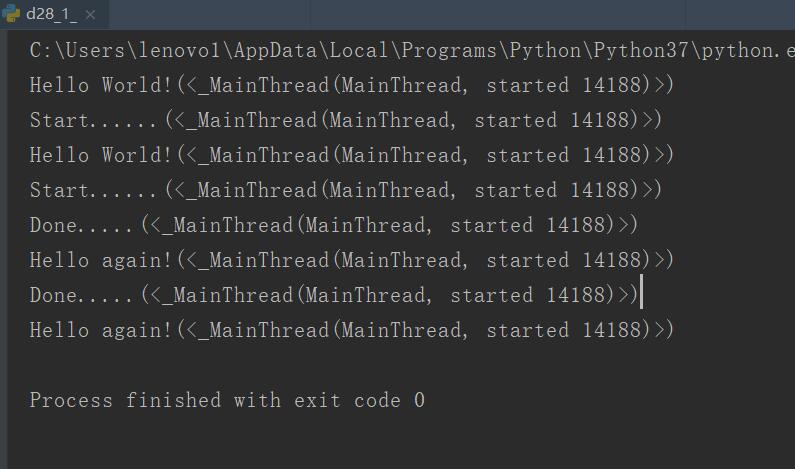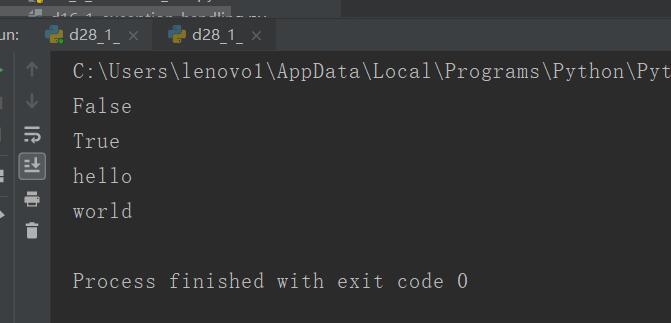Python 异步协程函数原理及实例详解
人气:0这篇文章主要介绍了Python 异步协程函数原理及实例详解,文中通过示例代码介绍的非常详细,对大家的学习或者工作具有一定的参考学习价值,需要的朋友可以参考下
一、 asyncio
1.python3.4开始引入标准库之中,内置对异步io的支持
2.asyncio本身是一个消息循环
3.步骤:
(1)创建消息循环
(2)把协程导入
(3)关闭
4.举例:
import threading
# 引入异步io包
import asyncio
# 使用协程
@ asyncio.coroutine
def hello():
print("Hello World!(%s)" % threading.current_thread())
print("Start......(%s)" % threading.current_thread())
yield from asyncio.sleep(5)
print("Done.....(%s)" % threading.current_thread())
print("Hello again!(%s)" % threading.current_thread())
# 启动消息循环
loop = asyncio.get_event_loop()
# 定义任务
tasks = [hello(), hello()]
# asyncio使用wait等待task执行完毕
loop.run_until_complete(asyncio.wait(
tasks))
# 关闭消息循环
loop.close()

二、asyncio and await
1.为了更好的表示异步io
2.python3.5引入
3.让协程代码更加简洁
4.使用上,可以简单的进行替换
(1)用async来替换@asyncio,coroutine
(2)用await来替换yield from
按照上面这个语法可以来改写前面的例子,运行结果是完全一致的
三、aiohttp
1.asyncio实现单线程的并发io,在客户端用处不大
2.在服务端可以asyncio+coroutine配合,因为http是io操作
3.asyncio实现了tcp,udp,ssl等协议
4.aiohttp是基于asyncio实现的http框架
5.例子:
import asyncio
from aiohttp
import web
async def index(request):
await asyncio.sleep(0.5)
return web.Response(body = b "<h1>Index</h1>")
async def hello(request):
await asyncio.sleep(0.5)
text = "<h1>hello,%s!</h1>" % request.match_info[
"name"]
return web.Response(body = text.encode(
"utf-8"))
async def init(loop):
app = web.Application(loop = loop)
app.router.add_route("GET", "/", index)
app.router.add_route("GET",
"/hellp/{name}", hello)
srv = await loop.create_server(app.make_handler(),
"127.0.0.1", 8000)
print(
"Server started at http://127.0.0.1:8000..."
)
return srv
loop = asyncio.get_event_loop()
loop.run_until_complete(init(loop))
loop.run_forever()
四、current,futures
1. python3新增的库
2.类似其它语言的线程池的概念
3.利用multiprocessing实现真正的并行计算(当然要求我们的CPU是多核的)
4.核心原理:以子进程的形式,实现多个python解释器
从而令python程序,可以利用多核CPU来提升执行速度。由于子进程于主解释器相分离,所以他们的全局解释器锁也是相互独立的,每个子进程都能完整的使用一个CPU内核
5.concurrent.futures.Executor
(1)ThreadPoolExecutor
(2)ProcessPoolExecutor
(3)执行的时候需要自行选择
(4)submit(fn,args,kwargs)
fn:异步执行的函数
args,kwargs参数
import time from concurrent.futures import ThreadPoolExecutor def return_future(msg): time.sleep(3) return msg # 创建一个线程池 pool = ThreadPoolExecutor(max_workers = 2)# 参数是2, 代表里面有两个线程干活 # 往线程池里面加入两个task f1 = pool.submit(return_future, "hello") f2 = pool.submit(return_future, "world") time.sleep(1) # 等待执行完毕 print(f1.done()) time.sleep(3) print(f2.done()) # 结果 print(f1.result()) print(f2.result())

源码
d28_1_asynchronization_examples.py
https://github.com/ruigege66/Python_learning/blob/master/d28_1_asynchronization_examples.py
您可能感兴趣的文章:
加载全部内容